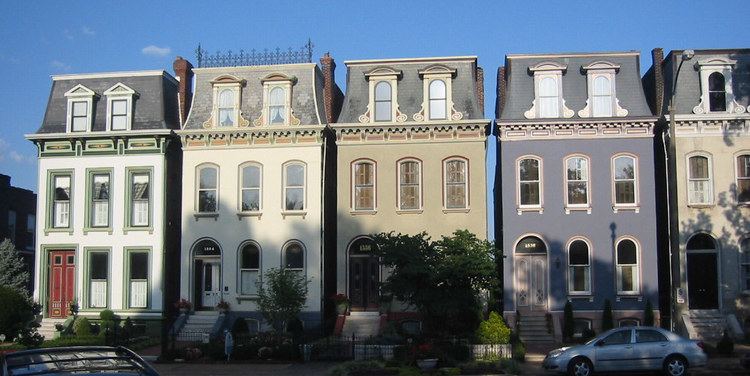 | ||
St. Louis is divided into 79 neighborhoods. Census data is collected for each neighborhood, as well as crime data, historic property data, and dining establishment health ratings. National historic neighborhoods are identified by the official neighborhood to which they belong.
Contents
Map of St. Louis, MO, USA
Also, several neighborhood names extend to areas well beyond their technical borders. For example, Downtown St. Louis is generally thought to include the St. Louis Union Station and the Scottrade Center, even though Downtown technically ends at Tucker Avenue (12th Street). Additionally, the Fox Theatre and Powell Symphony Hall are popularly considered a part of Midtown St. Louis even though they are in Grand Center. Dogtown is an area south of Forest Park that includes at least 4 distinct neighborhoods.
Moreover, sometimes several neighborhoods are lumped together in categories such as "North City" and "South City." North City used to have large Polish and German, among others, immigrant populations, evidenced by the churches they built, such as St. Stanislaus Kostka Church.
List of neighborhoods
The following is a list of neighborhoods of the city of St. Louis, Missouri.
Demographics
All Data from 2010 U.S. Census Bureau^1 American Indian or Alaskan Native ^2 May be of any race.
The north side of the city is defined as north of Delmar Boulevard, the central corridor as between Delmar and I-44, and the south side as south of I-44.
In 2010 the north side was 94.0% Black, 3.7% White, 0.2% Native American/Alaska Native, 0.2% Asian, 1.5% Two or More Races and 0.5% Some Other Race. 1.1% of the population was of Hispanic or Latino origin.
In 2010 the central corridor was 35.0% Black, 55.4% White, 0.2% Native American/Alaska Native, 6.4% Asian, 2.2% Two or More Races, and 0.7% Some Other Race. 2.8% of the population was of Hispanic or Latino origin.
In 2010 the south side was 26.0% black, 65.4% white, 0.3% Native American/Alaska Native, 3.3% Asian, 3.0% Two or More Races, and 2.0% Some Other Race. 5.3% of the population was of Hispanic or Latino origin.
Aldermanic wards
The city can also be divided by the wards of the Board of Aldermen. These wards, however, change with every new census, and data is not as readily available for comparison across wards. Nevertheless, the wards are important in the functioning of the city, as the approval of the local Alderman is generally understood to be necessary before large projects may begin.
